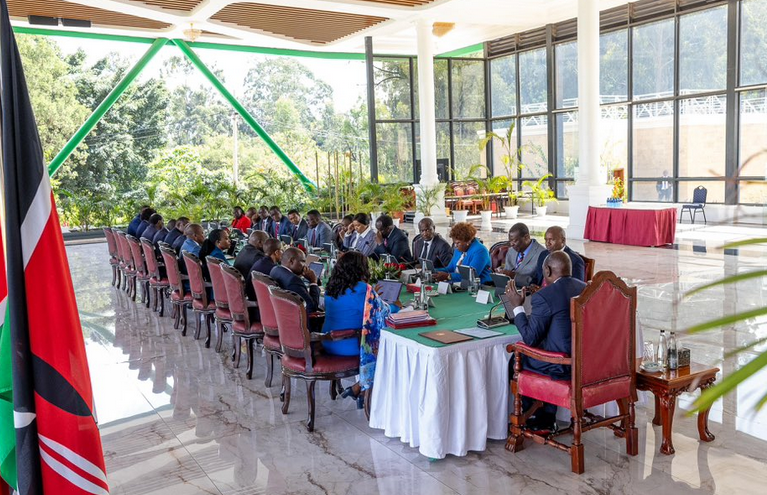 President William Ruto chairs a cabinet meeting on April 29, 2025. (PCS)
President William Ruto chairs a cabinet meeting on April 29, 2025. (PCS)President William Ruto’s cabinet has approved the dualing of the 20.2 kilometre Nairobi Northern Bypass.
In a cabinet dispatch released on Tuesday, June 24, 2025, the dualing of the road is a key upgrade aimed at easing traffic congestion.
The cabinet secretaries said the move is also aimed at expanding the road’s capacity to handle growing traffic volumes.
“The upgrade is expected to improve traffic flow, enhance road safety, and boost access to economic hubs, industrial zones, and essential services in Nairobi and Kiambu counties,” the dispatch reads.
The project will convert the current single carriageway into a dual carriageway.
It also includes the construction of eight interchanges, overpasses, and underpasses, as well as the development of non-motorised transport facilities, including walkways and cycle paths, improved drainage systems, and enhancements to adjacent roads.
Stretching from Ruaka in Kiambu to Ruiru, connecting with both the Western and Eastern bypasses, the Northern Bypass remains Nairobi’s only bypass that is still a single carriageway.
The bypass experiences heavy congestion during peak hours, leading to travel delays, higher transport costs, increased pollution, and reduced productivity.
In support of Nairobi’s broader urban transformation agenda, the Cabinet gave the green light to implement the Nairobi Railway City Central Station and Public Realm Project.
It is a transformative infrastructure development designed to decongest Nairobi and revitalise the Central Business District.
Cabinet said the flagship project, seen as a critical step in attracting private investment to the Railway City, will modernise the outdated Central Station into a state-of-the-art, multi-modal transport hub.
It is projected that the passenger demand will rise to 400,000 daily by 2030 and 600,000 by 2045.
The new station will feature nine platforms and improved access bridges, allowing for the efficient evacuation of up to 30,000 people per hour.
The Cabinet said that surrounding public realm improvements will unlock underutilised land, spur economic activity, and increase foot traffic into the city centre.
The project is backed by secured funding for key transport links, including BRT Line 3, several commuter rail lines, and a standard-gauge railway connection to Jomo Kenyatta International Airport.
It is expected to drive job creation, urban regeneration, and sustainable growth, establishing the station as Nairobi’s premier transport interchange.










